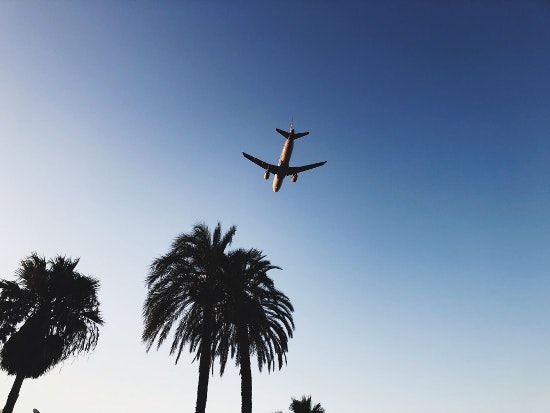Modern living has made flying a necessity, and we sometimes take for granted the amazing engineering and technology that keeps airplanes safely aloft. A symphony of precise systems and processes that operate in unison makes up the inner workings of an aircraft. In this article, you’ll learn more about the wonders of aviation as you study the seven essential elements that keep airplanes flying safely through the air.


1. Airframe
The structural skeleton of an airplane, or airframe, is in charge of withstanding the extreme pressures of flight. The airframe is made of titanium, titanium alloys, and composite materials, and it is designed to be both exceedingly strong and light. It encompasses the wings, fuselage, tail, and landing gear of the aircraft. The airframe’s amazing ability to bend while in flight is one of its most impressive features. Wing flex, a characteristic that causes aircraft wings, in particular, to bend upward while under stress, is a design element. This deliberate bending uniformly distributes the forces, improving the aircraft’s efficiency and stability. So, when you observe the wingtip bending during turbulence the next time you look out the window, know that it’s a well-engineered feature protecting your safety.
2. Jet Engines
An aircraft’s power source is its jet engine, providing the push required to move it forward. Turbofan engines, a kind of jet engine that combines jet propulsion concepts with a fan-driven system’s effectiveness, are often used in modern commercial aircraft. These engines are very powerful and efficient. The capacity of jet engines to consume vast amounts of air is a fascinating feature. A commercial jet engine can breathe in as much air during flight as the typical human does over the course of two days in only one second. The gasoline and fuel mixture in this large air intake is ignited to create the high-speed exhaust gasses that provide thrust.
3. Avionics Systems
The electronic brains of an airplane are its avionics systems. They include a broad variety of parts, including navigational systems, communication devices, and flight control computers. Together, these systems make sure that the aircraft is on the proper path, at the proper altitude, and that all systems are operating as intended. The redundancy of avionics systems is an intriguing feature. In order to guarantee that if one avionics system fails, another can take over smoothly, aircraft are outfitted with numerous independent avionics systems. Due to the additional degree of security provided by this redundancy, air travel is one of the safest ways of transportation.
4. Hydraulics Systems
Hydraulic systems provide the power behind the moving components of an airplane. They require hydraulic fluid to transfer force and operate several components, including the landing gear, flaps, and flight control surfaces. These components may be moved with power and precision thanks to hydraulics. The pressure that hydraulics systems work at is a fascinating feature. An aircraft’s hydraulic fluid may be subjected to pressures of up to 5,000 pounds per square inch (psi). This tremendous force is used to precisely and easily move massive parts, such as landing gear, which may weigh thousands of pounds.
5. Landing Gear
Aircraft landing gear is an engineering wonder that guarantees a controlled and smooth touchdown during landing. The wheels, tires, shock absorbers, and retraction mechanisms make up the landing gear. During takeoff and landing, these components must endure very strong forces. The intricacy of landing gear is a fascinating feature. Up to 20 wheels may be included in certain bigger aircraft’s landing gear in order to equally distribute the weight and guarantee a secure touchdown. Additionally, the shock absorbers on the landing gear are intended to soften the impact as the aircraft touches down, reducing stress on the airframe and the people within.
6. Airplane Batteries
Aircraft batteries, often overlooked but crucial components in the realm of aviation, play a vital role in ensuring the safety and reliability of flights. These specialized batteries provide backup power to essential systems in case of emergencies or electrical failures, including critical flight instruments, avionics, and emergency lighting. They are designed to withstand the unique demands of aviation, offering high energy density and reliability. Aircraft batteries are a key part of the redundancy built into aviation systems, ensuring that critical functions continue to operate safely, even in challenging situations
7. Winglets
Winglets, which are tiny, upward-facing extensions at the ends of an aircraft’s wings, have an unexpected impact on performance. These inconspicuous structures are intended to increase fuel economy by reducing drag. The aerodynamic effectiveness of winglets is a fascinating feature. Winglets assist in lowering drag and increasing lift by lessening the vortex that is formed at the wingtips. This has the effect of increasing fuel economy, extending cruising distances, and minimizing environmental impact. Modern airplanes now often contain winglets, which is evidence of ongoing attempts to make air travel more economical and environmentally beneficial.
Conclusion
The cooperation of these seven essential elements ensures the safe and effective functioning of aircraft. Each component has a role in a successful flight, from the airframe’s durability and flexibility to the avionics systems’ accuracy, the hydraulics’ dependability, and the comfort offered by environmental control systems. Understanding these complex systems gives a better appreciation for the technical marvels that enable air flight.









